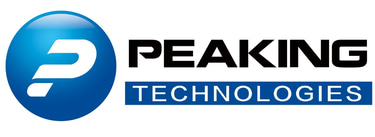Top 10 EMS Trends in 2025 Every Electronics Hardware Startup Must Know
Discover the top 10 Electronics Manufacturing Services (EMS) trends shaping 2025 and learn how hardware startups, inventors, and innovators can leverage them to accelerate product development, boost efficiency, and stay competitive in a rapidly evolving industry.
JoeZ
6/1/20253 min read


In 2025, the Electronics Manufacturing Services (EMS) industry is undergoing transformative changes, driven by technological advancements, shifting market demands, and a growing emphasis on sustainability. For electronics hardware startups, inventors, and innovators, understanding these trends is crucial for staying competitive and fostering innovation.
1. Modular and Configurable Manufacturing Lines
The demand for faster product turnaround, personalization, and multi-SKU builds has led EMS providers to adopt modular, reconfigurable manufacturing cells. These flexible setups reduce line changeover times and support multiple products with shared platforms, enabling quicker new product introductions and scalability. For startups, this means the ability to iterate designs rapidly and bring products to market faster.
2. Dual-Region Manufacturing Models
In response to global supply chain disruptions and the need for greater resilience, EMS providers are implementing dual-region and nearshoring strategies. By diversifying manufacturing locations, companies can reduce logistics risks and improve time-to-market. Startups should consider aligning their design files and bills of materials (BOMs) with production transferability in mind to take advantage of these models.
3. Smart Factories with AI-Driven Quality Assurance
The integration of Artificial Intelligence (AI) into manufacturing processes is revolutionizing quality assurance. EMS providers are utilizing AI for real-time quality checks, predictive maintenance, and process optimization. Technologies such as vision-based inspection and digital twins are enhancing production planning and reducing defects. For innovators, partnering with EMS providers that leverage AI can lead to higher product quality and more efficient manufacturing.
4. Sustainability and Circular Manufacturing Initiatives
Sustainability is becoming a non-negotiable aspect of electronics manufacturing. EMS providers are investing in recyclable materials, low-impact sourcing, waste tracking, and carbon reporting. Designing products with modularity and ease of repair in mind not only extends product life but also aligns with environmental regulations and consumer expectations. Startups focusing on sustainable design can differentiate themselves in the market and appeal to eco-conscious consumers.
5. Software-Centric EMS Collaboration
The line between hardware and software is blurring, with EMS providers offering support for firmware development, test automation, and early integration during prototyping. Services such as over-the-air (OTA) updates, secure boot workflows, and embedded test scripting are becoming standard. For hardware startups, collaborating with EMS partners that provide full-stack integration can streamline development and enhance product functionality.
6. Integration of Emerging Technologies
EMS providers are embracing emerging technologies to stay ahead. The integration of Internet of Things (IoT) devices and sensors into production lines enables real-time data collection and predictive maintenance, enhancing operational efficiency. Robotics and automation are being utilized for tasks requiring high precision, reducing labor costs and improving consistency. Startups should consider how these technologies can be incorporated into their products and manufacturing processes to gain a competitive edge.
7. Advanced Materials and Miniaturization
The pursuit of smaller, more powerful electronics is driving innovation in materials science. EMS providers are exploring new materials like graphene and nanomaterials, enabling the development of lighter, more energy-efficient components. Miniaturization techniques are allowing for increasingly compact and complex devices, opening new possibilities for product design. Innovators should stay informed about these advancements to leverage them in their product development.
8. Additive Manufacturing and 3D Printing
Additive manufacturing, or 3D printing, is transforming prototyping and production. EMS providers are using 3D printing for rapid prototyping of PCBs and enclosures, accelerating product development and reducing time-to-market. This technology also enables the creation of custom components for niche applications. Startups can benefit from the flexibility and cost savings offered by additive manufacturing.
9. Focus on Cybersecurity
As manufacturing becomes more digitized, cybersecurity is a growing concern. EMS providers are implementing robust security protocols, conducting regular audits, and collaborating with partners to ensure end-to-end security. Startups must prioritize cybersecurity in their product design and manufacturing processes to protect sensitive data and maintain customer trust.
10. Emphasis on Customization and Personalization
Consumers are increasingly seeking customized and personalized electronics products. EMS providers are investing in technologies like 3D printing and modular design to offer flexible and agile manufacturing solutions. By providing tailored products, startups can meet diverse customer needs and stand out in the market.
The EMS industry in 2025 is characterized by rapid technological advancements, a strong focus on sustainability, and an emphasis on flexibility and resilience. For electronics hardware startups, inventors, and innovators, staying informed about these trends and collaborating with forward-thinking EMS providers is essential for success. By embracing these changes, startups can accelerate product development, improve quality, and meet the evolving demands of the market.
Sources:
Emerging Technologies Reshaping Electronics Manufacturing Services
Top 5 EMS trends that will shape the electronics industry in 2025
Top 7 Trends in the Electronics Manufacturing Services (EMS) Market
